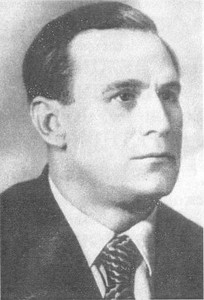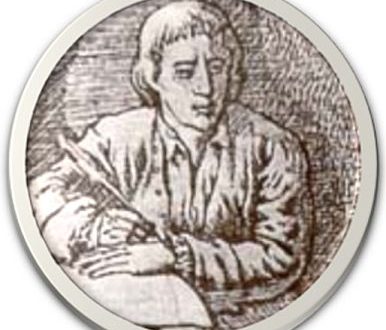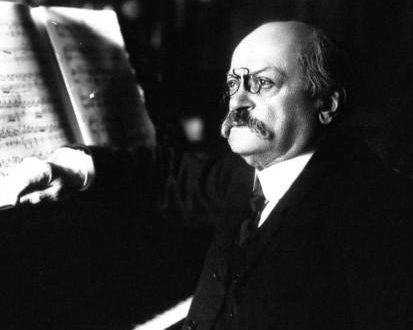
Herman Galynin |
Herman Galynin
I am glad and proud that Herman treated me well, for I had the good fortune to know him and watch the flowering of his great talent. From a letter by D. Shostakovich

The work of G. Galynin is one of the brightest pages of post-war Soviet music. The legacy left by him is small in number, the main works belong to the field of choral, concerto-symphonic and chamber-instrumental genres: the oratorio “The Girl and Death” (1950-63), 2 concertos for piano and orchestra (1946, 1965), “Epic Poem “for symphony orchestra (1950), Suite for string orchestra (1949), 2 string quartets (1947, 1956), Piano trio (1948), Suite for piano (1945).
It is easy to see that most of the works were written during the five years of 1945-50. That is how much time the tragic fate gave Galynin for full-fledged creativity. In fact, all the most significant in his legacy was created during his student years. For all its uniqueness, the story of Galynin’s life is characteristic of a new Soviet intellectual, a native of the people, who managed to join the heights of world culture.
An orphan who lost his parents early (his father was a worker in Tula), at the age of 12, Galynin ended up in an orphanage, which replaced his family. Already at that time, the boy’s outstanding artistic abilities showed up: he drew well, was an indispensable participant in theatrical performances, but most of all he was drawn to music – he mastered all the instruments of the orphanage’s orchestra of folk instruments, transcribed folk songs for him. Born in this benevolent atmosphere, the first work of the young composer – “March” for piano became a kind of pass to the music school at the Moscow Conservatory. After studying for a year at the preparatory department, in 1938 Galynin was enrolled in the main course.
In the highly professional environment of the school, where he communicated with outstanding musicians – I. Sposobin (harmony) and G. Litinsky (composition), Galynin’s talent began to develop with amazing force and speed – it was not for nothing that fellow students considered him the main artistic authority. Always greedy for everything new, interesting, extraordinary, invariably attracting comrades and colleagues, in his school years Galynin was especially fond of piano and theater music. And if the piano sonatas and preludes reflected the youthful excitement, openness and subtlety of the feelings of the young composer, then the music for M. Cervantes’s interlude “The Salamanca Cave” is a penchant for sharp characterization, the embodiment of the joy of life.
What was found at the beginning of the path was continued in the further work of Galynin – primarily in piano concertos and in the music for J. Fletcher’s comedy The Taming of the Tamer (1944). Already in his school years, everyone was amazed by the original “Galynin” style of playing the piano, all the more surprising because he never systematically studied pianistic art. “Under his fingers, everything became large, weighty, visible … The performer-pianist and the creator here, as it were, merged into a single whole,” recalls Galynin’s fellow student A. Kholminov.
In 1941, a first-year student of the Moscow Conservatory, Galynin, volunteered for the front, but even here he did not part with music – he directed amateur art activities, composed songs, marches, and choirs. Only after 3 years did he return to the composition class of N. Myaskovsky, and then – due to his illness – he transferred to the class of D. Shostakovich, who already then noted the talent of a new student.
Conservatory years – the time of formation of Galynin as a person and musician, his talent is entering its heyday. The best compositions of this period – the First Piano Concerto, the First String Quartet, the Piano Trio, the Suite for Strings – immediately attracted the attention of listeners and critics. The years of study are crowned by two major works of the composer – the oratorio “The Girl and Death” (after M. Gorky) and the orchestral “Epic Poem”, which soon became very repertoire and was awarded the State Prize in 2.
But a serious illness already lay in wait for Galynin, and did not allow him to fully reveal his talent. The following years of his life, he courageously fought the disease, trying to give every minute snatched from her to his favorite music. This is how the Second Quartet, the Second Piano Concerto, the Concerto grosso for piano solo, the Aria for Violin and String Orchestra arose, the early piano sonatas and the oratorio “The Girl and Death” were edited, the performance of which became an event in the musical life of the 60s.
Galynin was a truly Russian artist, with a deep, sharp and modern view of the world. As in his personality, the composer’s works are captivating by their remarkable full-bloodedness, mental health, everything in them is fashioned large, convex, significant. Galynin’s music is tense in thought, a clear inclination towards epic, picturesque utterances is set off in it by juicy humor and soft, restrained lyrics. The national nature of creativity is also indicated by the melodism of songs, a wide chant, a special “clumsy” system of harmony and orchestration, which goes back to Mussorgsky’s “irregularities”. From the very first steps of Galynin’s composing path, his music became a noticeable phenomenon of Soviet musical culture, “because,” according to E. Svetlanov, “an encounter with Galynin’s music is always a meeting with beauty that enriches a person, like everything truly beautiful in art “.
G. Zhdanova





